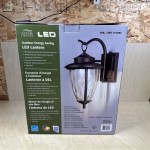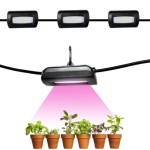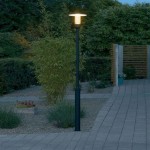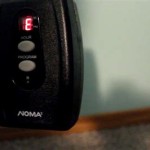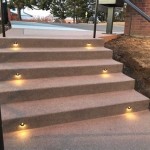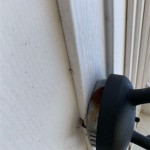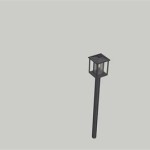The Enduring Appeal of Large Outdoor Illuminated Clocks
Large outdoor illuminated clocks serve as more than just timekeeping devices. They contribute significantly to the aesthetic appeal and functional utility of public spaces, commercial buildings, and even private estates. These imposing timepieces are designed to be visible from a distance, providing a readily accessible source of temporal information while simultaneously enhancing the visual landscape.
The construction and implementation of large outdoor illuminated clocks necessitate careful consideration of several factors, ranging from the selection of durable materials to the intricacies of illumination technology. The success of these installations hinges on their ability to withstand the elements, maintain accurate time, and remain visually appealing both day and night. Therefore, understanding the key elements that contribute to the design, functionality, and maintenance of these clocks is crucial for their effective and long-lasting deployment.
Durability and Material Selection
The external environment presents numerous challenges for any outdoor structure, and large illuminated clocks are no exception. They are constantly exposed to the elements, including rain, snow, wind, and extreme temperature fluctuations. Consequently, the choice of materials is paramount to ensuring the clock's longevity and structural integrity.
Clock faces are often constructed from durable materials such as polycarbonate, or laminated safety glass. These materials are chosen for their resistance to impact, UV radiation, and weather-related degradation. Polycarbonate, in particular, offers excellent impact resistance and can be easily molded into complex shapes. Laminated safety glass offers durability and maintains integrity if fractured, preventing shards from becoming hazardous.
The clock's framework and support structure are typically built from metals such as stainless steel or aluminum. Stainless steel is prized for its corrosion resistance, making it ideally suited for coastal environments or areas with high levels of air pollution. Aluminum, while lighter in weight, still offers considerable strength and is also resistant to corrosion. Both materials can be powder-coated or otherwise treated to further enhance their resistance to damage and degradation.
The movement, which governs the clock's timekeeping accuracy, is generally housed within a protective enclosure made of weather-resistant materials. This enclosure safeguards the delicate internal mechanisms from moisture, dust, and other environmental contaminants that could compromise their functionality. This ensures long-term reliability and minimizes the need for frequent maintenance.
Illumination Technologies and Visibility
A key feature of large outdoor clocks is their illumination, which allows them to be easily read at night or in low-light conditions. The technology used for illumination has evolved significantly over time, with modern clocks often employing energy-efficient and long-lasting LED lighting.
Traditional illumination methods, such as incandescent or fluorescent lamps, are less common in modern outdoor clocks due to their higher energy consumption and shorter lifespan. LEDs offer several advantages, including lower energy consumption, longer lifespan, and greater flexibility in terms of color and brightness. LED lighting can be configured to provide uniform illumination across the clock face, ensuring excellent readability from a distance.
Fiber optic lighting is another option, offering a diffused and even light distribution. This method can create a visually appealing glow without harsh shadows. The light source is typically located within the clock housing, and the light is transmitted through optical fibers to illuminate the clock face. This contributes to efficient energy usage and easier maintenance because the light source is protected from the elements.
The intensity of illumination is carefully calibrated to ensure optimal visibility without causing glare or light pollution. Light sensors may be incorporated to automatically adjust the brightness of the illumination based on ambient light levels, further enhancing visibility while minimizing energy consumption. Placement and angle of the light sources are also factored to avoid creating shadows or visual distractions, making the clock readable from various viewing angles.
Timekeeping Accuracy and Synchronization
The accuracy of a large outdoor clock is of utmost importance. Modern clocks typically employ electronic movements that are synchronized to a highly accurate time source, such as a GPS (Global Positioning System) or a network time server. This ensures that the clock maintains precise timekeeping, even in the absence of manual adjustments.
GPS synchronization involves receiving time signals from satellites orbiting the Earth. These signals are extremely accurate and provide a reliable time reference for the clock's movement. Network time servers, on the other hand, obtain time information from the internet. The clock connects to the network via a wired or wireless connection and synchronizes its time with the server.
In the event of a power outage, the clock's movement may be equipped with a backup battery to maintain timekeeping accuracy. Once power is restored, the clock will automatically resynchronize with the time source to ensure that it displays the correct time. This feature is crucial for ensuring continuous and reliable operation of the clock.
Some clocks utilize radio-controlled timekeeping, receiving signals from terrestrial radio transmitters broadcasting time codes. This method eliminates the need for internet connectivity or reliance on satellite signals, offering an alternative synchronization mechanism in certain locations.
Proper installation is critical to ensure accurate timekeeping. This includes ensuring the clock mechanism is securely mounted and shielded from vibrations. The orientation of the clock face will affect its visibility in different lighting conditions, and the clock should be positioned to minimize direct sunlight exposure that may affect temperature and performance.
Regular maintenance is equally important. This includes periodic checks of the clock's accuracy, synchronization status, and the condition of its internal components. Replacement of batteries, lubrication of moving parts, and cleaning of the clock face are all essential steps in ensuring its long-term reliability and timekeeping accuracy.
Beyond these core aspects, the aesthetic design of the clock plays a crucial role in its overall impact. A well-designed clock can enhance the architectural style of a building or public space, while a poorly designed clock can detract from its visual appeal. The size, shape, and style of the clock face should be carefully considered to ensure that it complements its surroundings. The color scheme, materials, and finishes should also be chosen to create a cohesive and visually pleasing design.
The integration of branding elements, such as logos or corporate colors, can further enhance the clock's aesthetic appeal and contribute to brand recognition. Custom clock faces and designs can be created to reflect the unique identity of a business or organization.
In conclusion, large outdoor illuminated clocks are significant elements in urban environments, providing functional utility and enhancing the visual landscape. Their effectiveness relies on durable construction, efficient illumination, and accurate timekeeping mechanisms. Careful consideration of material selection, illumination methods, and synchronization technologies is essential for ensuring the long-term reliability and aesthetic appeal of these imposing timepieces. Proper installation, regular maintenance, and thoughtful aesthetic design are also key to ensuring that these clocks serve their intended purpose for years to come.

The Tree Of Life Illuminated Outdoor Clock Hammacher Schlemmer

Acurite 24 In Led Illuminated Outdoor Wall Clock With Thermometer And Humidity Sensor Metal Frame Glass Lens Black 75133m The Home Depot

Canister Tower Clock Large Wall 72 Inch Roman Illuminated Ping Center Automatic Gps By Lumichron Company

Led Illuminated Outdoor Clock With Thermometer

24 Outdoor Indoor Wall Clock With Thermometer And Humidity Weathered Broe Finish Acurite Target

Large Illuminated Outdoor Clock With Thermometer And Humidity Sensor 24 In New

Canister Wall Large Automatic Illuminated Pool Clock By Lumichron Company

Acurite 24 In Led Illuminated Outdoor Wall Clock With Thermometer Humidity Sensor Roman Numerals Metal Frame Glass Lens 75022m The Home Depot

The Tree Of Life Illuminated Outdoor Clock Hammacher Schlemmer

Ocest 14 Inch Silent Retro Led Night Light Wall Clock With Thermometer Hygrometer Waterproof Glow In The Dark Large For Bedroom Livingroom Bathroom Patio Com
Related Posts
